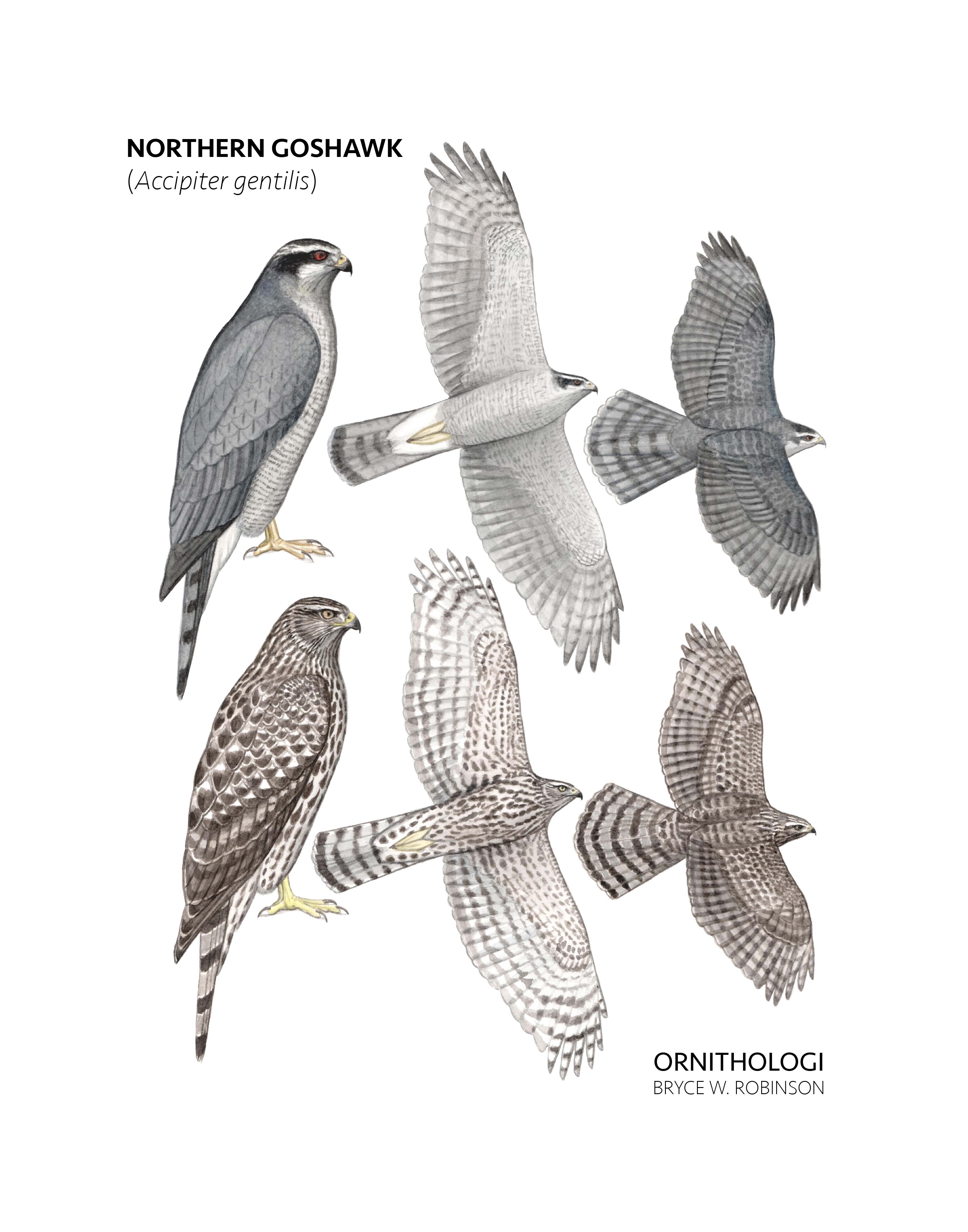Category: Illustrations
April 3, 2020
Logo for the Mara Raptor Project
by Bryce W. Robinson

From time to time I get asked to design a logo for an event or organization. I enjoy these opportunities because it allows me take a break from guidebook illustration and exercise more freeform creativity. I recently finished a logo for the Mara Raptor Project, a great organization that focuses on research and conservation of raptors in the Maasai Mara in Kenya. The flagship species for this organization is the Martial Eagle (Polemaetus bellicosus), an excellent booted eagle (Subfamily: Accipitrinae) that breeds across much of Africa. The logo I created features a bust of an adult of this striking species.
To see more of my logos, visit my logo page.
November 26, 2019
Published in the Journal of Raptor Research: Defining Raptors and Birds of Prey
by Bryce W. Robinson

Figure 1 from McClure et al. 2019, ‘Defining raptors and birds of prey’ in the Journal of Raptor Research. Raptors, under our new definition, include all orders encompassed by the gray box in this figure.
In the latest issue of the Journal of Raptor Research, colleagues and I, led by Chris McClure, published a commentary proposing a definition for the terms raptor and bird of prey.
The definition is essentially all orders of core land birds (Telluraves) in which the majority of the members have maintained an ancestral raptorial condition. In other words, raptors or birds of prey belong to a group of birds that descended from an ancestor that had a raptorial lifestyle and morphology. The species that evolved from this common ancestor and maintained raptorial characteristics are thus considered raptors. This places the orders Accipitriformes, Cathartiformes, Falconiformes, and Strigiformes together as raptors, a grouping that is largely consistent with tradition. The big change is that this group also includes the order Cariamiformes, an order containing the two species of Seriemas from South America. This is the first time that Seriemas have been included as raptors (apart from a suggestion in Jarvis et al. 2014), but as we outline in the paper the natural history of the species along with its placement in the evolutionary grade cause it to fall under our current definition of raptor and bird of prey. So, welcome Seriemas to the Raptors!
As I stated above, the orders Accipitriformes, Cathartiformes, Falconiformes, and Strigiformes have all traditionally been considered raptors and birds of prey. But, there has also been considerable disagreement about the inclusion of some of these, such as Cathartiformes (New World vultures) and Strigiformes (owls). There has also long been discussion about the inclusion of shrikes (Lanidae) and ravens (Corvidae) because they either share some raptorial morphology and life history characteristics, or fulfill a similar ecological niche. This disagreement has caused many discussions in my life alone. I recall multiple discussions about whether or not Turkey Vultures are raptors, which stirred much of the conversation that led to my involvement in the publication of this paper.
Now, we don’t have to argue, Turkey Vultures are raptors. Since this definition is backed by much of the raptor research community, and is solidly outlined, defensible, and now published in the Journal of Raptor Research, I believe this new definition properly orients us to what is and is not a Raptor or Bird of Prey. We can now move forward and focus on the important work of conserving much of the members of this group.
Read “Defining raptors and birds of prey” open access here.
October 31, 2019
Raptors of North America – Northern Goshawk (Accipiter gentilis) Illustration
by Bryce W. Robinson
I’m working to illustrate the raptors of North America. To help me out along the way, you can purchase limited editions prints of plates, like this image of the Northern Goshawk (Accipiter gentilis), in the shop.
A special thanks to HawkWatch International and Golden Eagle Audubon Society for their support of my work.

